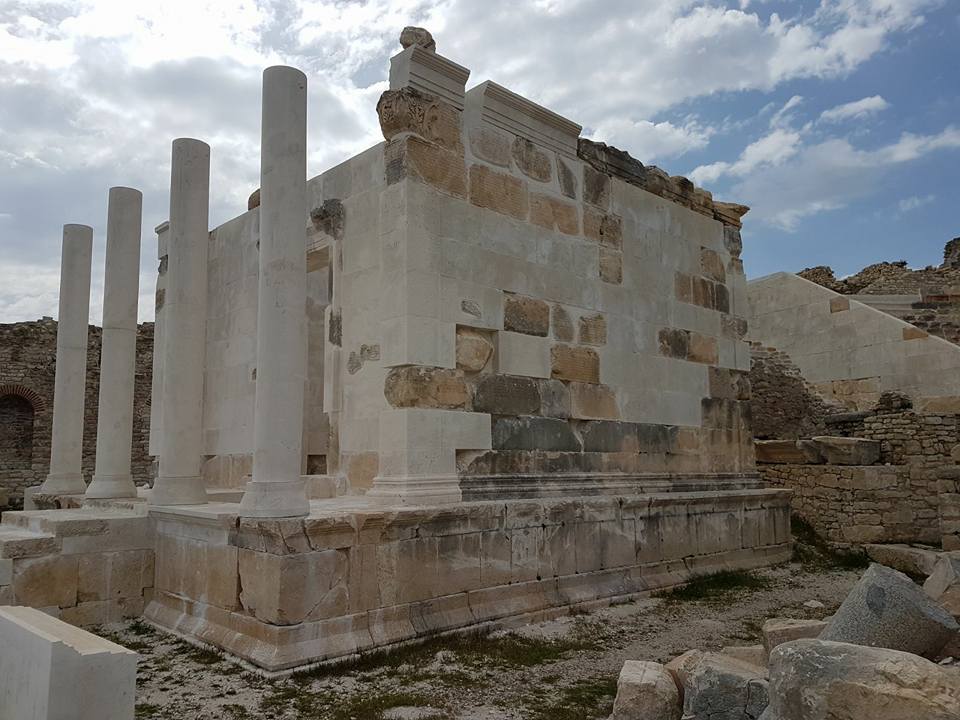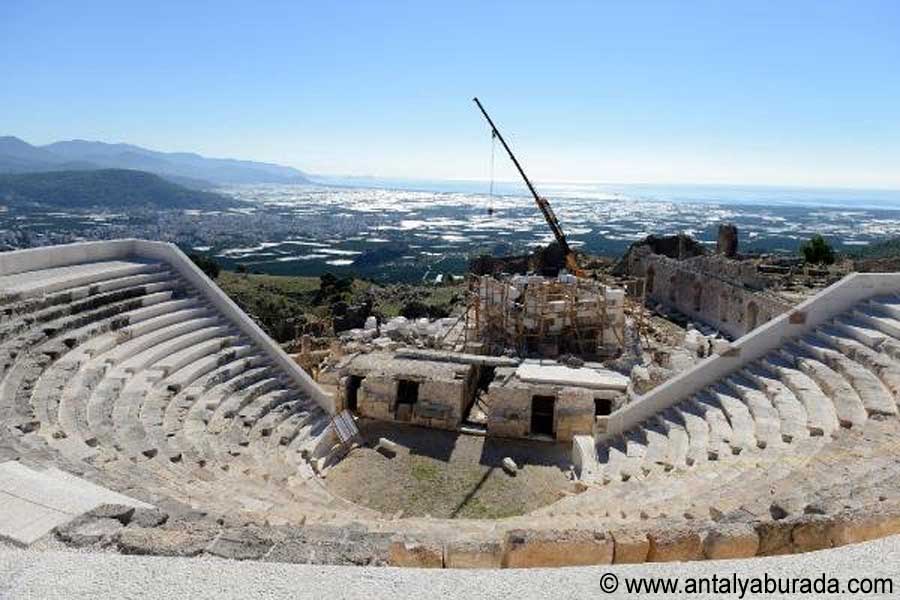 |
| Rhodiapolis | |||
|
|
|
||
| The theatre with the stage house. Before that the mausoleum of Opramoas in 2009 | |||
|
|
|||
| The theatre with the stage house. Bevore that the mausoleum of Opramoas in autumn 2015 | |||
 |
|||
| The mausoleum of Opramoas in spring 2017 © by www.kemer-tr.info | |||
|
|
|||
| The theatre with the stage house. Before that the mausoleum of Opramoas in autumn 2017 | |||
| (very ugly "renovated" and then shamefacedly hidden) | |||
|
Rhodiapolis was forgotten again about 100 years ago after the first excavations by Austrian archaeologists. Only a forest fire in the 1990s brought the now completely overgrown ruins back to light and thus to public awareness. |
|||
|
|
|||
|
Little is known about the ancient city of Rhodiapolis. The time of the first settlement still lies in the darkness of the past. However, Lycian origins are already suspected. It seems that at least the name of the city is due to settlers from Rhodes, who named the newly founded city after its homeland. Rhodiapolis = City of the Rhodians. (Polis => city, Acropolis => upper city) The excavation remains of a tower prove the Hellenistic foundation in addition to the name of the city. |
|||
|
|
|||
|
Big cistern |
|||
|
However, the city experienced its heyday in the Roman imperial period. Most of the buildings recognizable today date from this period. During this period, Rhodiapolis was home to one of the richest men of the ancient world: Opramoas. Opramoas is considered the founder of many monuments in this region. For example, an inscription at the Theatre of Myra says that it was rebuilt after the earthquake of 141 AD with funds from the Euerget Opramaos of Rhodiapolis. It is considered a prime example of euergetism, especially in Hellenism and during the Roman Empire, euergetism was particularly important in the cities of the eastern Mediterranean. Powerful and wealthy members of the local councils underlined their claim to leadership in the respective city through foundations, games or grain donations and charitable buildings such as baths, theatres and aqueducts, and a mausoleum was erected in his honour in front of the theatre, which was reconstructed and rebuilt in autumn 2015 using the preserved components. |
|||
|
|
|||
|
|
|||
|
In the background the city of Kumluca |
|||
|
|
|||
|
|
|||
|
|
|||
|
inscription plinth |
|||
|
|
|||
|
|
|||
|
Inscription |
|||
|
The city faces the sea below a hill called the Acropolis. The area around the theatre, the Agora and the Stoa can be described as the centre. The sparse remains of the mausoleum of Opramaos, a 7 x 7.5 m building made of carefully hewn and joined blocks, are located in the square in front of the theatre's stage. The walls of this monument were covered with honourable inscriptions. A decisive disadvantage of this settlement site is the fact that no source can be identified in the immediate vicinity. The next spring is about 1 km away from the sea in the valley behind the 300 m high hilltop of the Acropolis, a good 100 m downhill. Aqueducts are not detectable. All the more attention was paid to the construction of cisterns, one of which is located in front of the round temple. |
|||
|
|
|||
| Photos: @chim | |||
| Translation aid: www.DeepL.com/Translator | |||
| Source: Wikipedia and others | |||
|
|
|||


